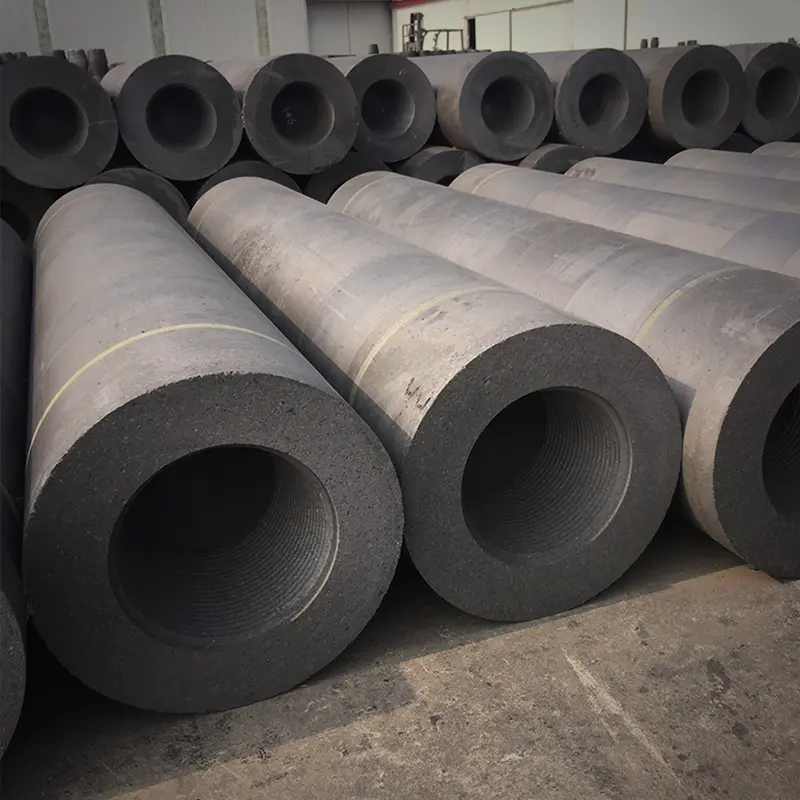As the demand for Ultra High Power (UHP) graphite electrodes continues to rise, so does the need for sustainable production practices. The manufacturing of UHP graphite electrodes can have significant environmental impacts, including energy consumption, waste generation, and emissions. However, advancements in technology and a growing emphasis on sustainability are leading to more eco-friendly practices in this industry. In this blog, we will explore the environmental technologies employed in UHP graphite electrode production and how they contribute to reducing the ecological footprint.

Energy Efficiency Improvements
One of the primary areas of focus in the production of UHP graphite electrodes is energy efficiency. Traditional manufacturing processes are often energy-intensive, leading to high carbon emissions. To combat this, manufacturers are increasingly adopting energy-efficient technologies, such as:
• Electric Arc Furnaces (EAF): EAFs are used for the production of graphite electrodes and are designed to operate with lower energy consumption compared to conventional furnaces. By optimizing the energy input and utilizing advanced control systems, EAFs can significantly reduce the overall energy required for production.
• Heat Recovery Systems: Implementing heat recovery systems allows manufacturers to capture and reuse waste heat generated during the production process. This not only lowers energy costs but also reduces the need for additional fuel, minimizing emissions.
Waste Management and Recycling
Effective waste management is crucial for reducing the environmental impact of UHP graphite electrode production. Several strategies are being employed to manage waste and promote recycling:
• Byproduct Utilization: Many byproducts generated during the production of graphite electrodes can be repurposed. For instance, fine graphite powder produced during machining can be recycled and used in other applications, reducing waste and conserving resources.
• Closed-Loop Systems: Some manufacturers are adopting closed-loop systems that recycle water and other materials used in the production process. This minimizes water usage and reduces the discharge of pollutants into the environment.
Emission Control Technologies
Reducing emissions is a vital aspect of making UHP graphite electrode production more sustainable. Various technologies are being implemented to control and minimize emissions:
• Dust Collection Systems: Advanced dust collection systems help capture particulate matter generated during production. This not only improves air quality but also ensures compliance with environmental regulations.
• Gas Scrubbing Technologies: Gas scrubbing systems are employed to treat exhaust gases before they are released into the atmosphere. These technologies can significantly reduce harmful emissions, including volatile organic compounds (VOCs) and other pollutants.
Sustainable Sourcing of Raw Materials
The environmental impact of UHP graphite electrode production begins with the sourcing of raw materials. Sustainable sourcing practices are becoming increasingly important:
• Responsible Mining Practices: Manufacturers are focusing on sourcing graphite from suppliers that adhere to responsible mining practices. This includes minimizing habitat destruction, ensuring fair labor practices, and reducing the carbon footprint associated with transportation.
• Alternative Materials: Research is ongoing into alternative materials that can be used in place of traditional graphite. These materials may offer similar performance characteristics with a lower environmental impact.
Conclusion
The production of UHP graphite electrodes is evolving toward more sustainable practices, driven by advancements in technology and a commitment to environmental stewardship. By focusing on energy efficiency, waste management, emission control, and sustainable sourcing, manufacturers can significantly reduce their ecological footprint. As the industry continues to innovate, the integration of these environmental technologies will play a crucial role in ensuring that UHP graphite electrode production meets the demands of both the market and the planet. Embracing sustainability not only benefits the environment but also enhances the long-term viability of the industry.
Post time: 10 月-09-2024













